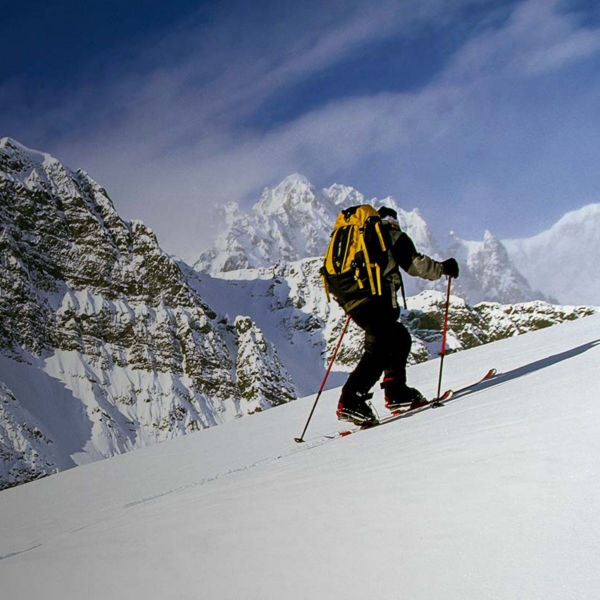
Ready to extend your hiking season year-round? Winter hiking lets you explore gorgeous landscapes without the crowds, see an entirely new side of your favorite places, and beat cabin fever like nothing else. But your regular hiking boots, or even winter boots, probably won’t provide the traction and floatation that you’ll need for hiking in snow. Solution: Upgrade to a pair of snowshoes.
Strapping on a pair of snowshoes distributes your weight over a wider area, helping keep you on top of the snow. The additional traction underfoot makes moving around the snowy landscape much easier and safer. Some designs capably deal with deep powder, while others work best on steep, packed slopes. You’ll find some pairs are light and maneuverable, while others are longer and floatier. Here’s how to assess your options to find the best snowshoes for you.
In this article, you’ll learn:
- The pros and cons of different snowshoe styles
- How to appropriately size your snowshoes
- What traction features to choose to meet your needs
- How bindings and heel bars work
Snowshoe Style
Snowshoes come in several different styles, each one optimized for a different use. Some have a frame paired with a different kind of decking—that is, the material that makes up the snowshoe’s surface area—while others are all the same material.
Tubular Frame + Decking
This design features a tube-shaped frame, often made of aluminum, with decking made from materials like plastic, polyester, or rubber. It’s the design that most resembles old-fashioned snowshoes made from wood frames and rawhide straps, and provides great flotation in deep, powdery snow.
Composite
These one-piece ’shoes use the same rigid material for the frame and decking. They usually have excellent traction and are ideal for steep, hard-packed conditions. (Some snowshoes have a steel frame paired with rubber decking—though they look a bit more like the tubular frame design, they function more like composite snowshoes on packed snow.)
EVA Foam
Light, flexible, and soft, one-piece foam snowshoes are best for flatter terrain and less technical use.
Running Snowshoes
Built for speed, running snowshoes might use any of the above construction styles. But they’re all lightweight to reduce fatigue, narrow for a more natural gait, and shorter for maneuverability. This makes them ideal for running on packed snow, but you won’t get much flotation in deeper stuff.
Size
Long and floaty or short and nimble? Getting the right size in your snowshoes is important. For one, a model that’s not large enough to support your weight will have you sinking in deeper snow, but one that’s too large will be clumsy to walk in. Snowshoes typically have a recommended maximum weight: Check this stat as you’re shopping, and make sure to account for the weight of the gear you’ll be carrying, too. The heavier you (and your backpack) are, the more flotation, and therefore, surface area, you’ll need.
If you’re deciding between several models that can support your weight, remember that shorter snowshoes are easier to maneuver, but deliver less flotation. Longer snowshoes, on the other hand, float better in deep powder. Some snowshoes have extra tails that can be attached for powdery conditions and removed when you don’t need them.
Some ’shoes have men’s and women’s versions, too. Women’s snowshoes are typically lighter and narrower to account for the usual female gait.






















